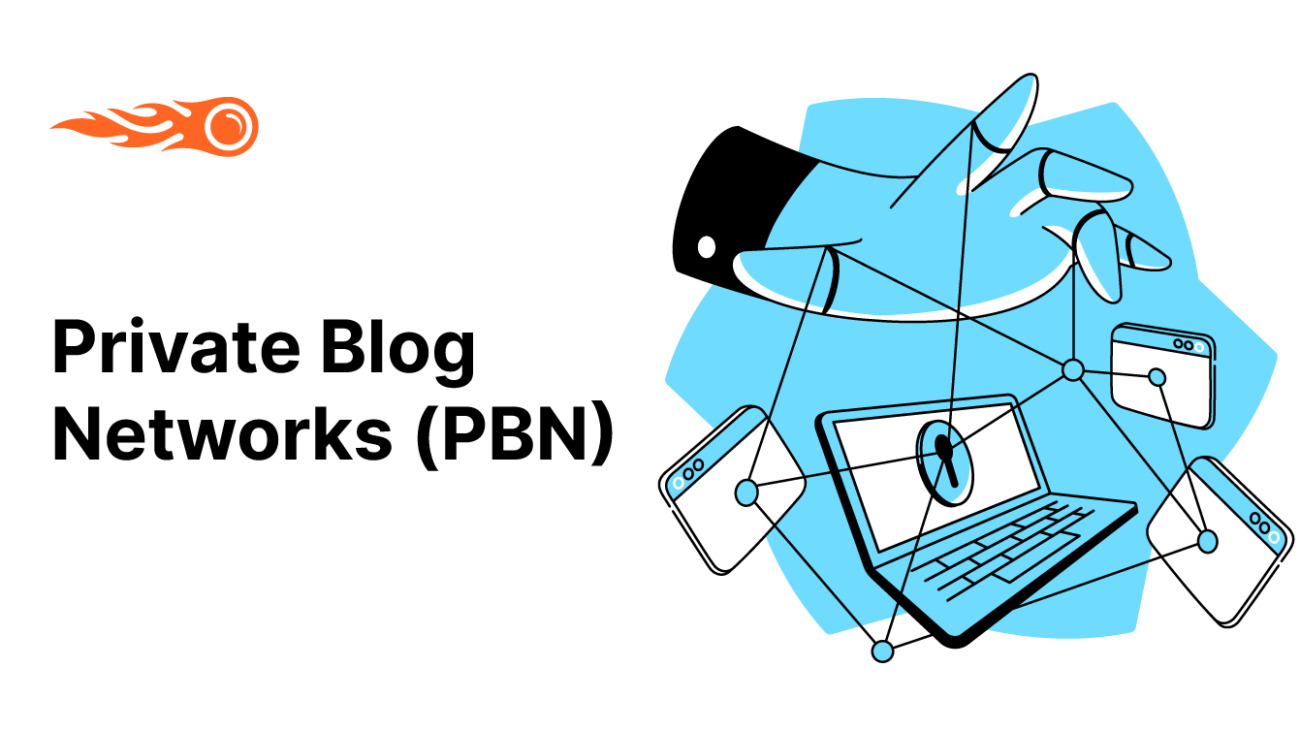Introduction
In the cutthroat world of SEO, Private Blog Networks (PBNs) are both feared and admired. When done right, PBNs can offer high-authority backlinks that skyrocket rankings. But done wrong, they can trigger manual penalties that wipe entire domains off Google.
If you’re considering building a PBN in 2025, you need to understand one thing: Google is smarter than ever. Its spam-detection algorithms can sniff out PBNs with unnatural link patterns, duplicate hosting, or obvious footprints.
This comprehensive guide walks you through how to build a PBN without getting penalized. We’ll dive deep into footprint removal, content uniqueness, hosting diversity, domain sourcing, and link strategy all with an emphasis on advanced SEO tactics and algorithm resilience.
1. What Is a PBN and Why Do SEOs Still Use Them?
A Private Blog Network is a network of authoritative websites controlled by one owner, created with the sole purpose of linking to a “money site” to improve its rankings.
Why use them?
-
Quick DA/DR boosts for new sites
-
Control over anchor text and link placement
-
Better indexing of new content through high-powered backlinks
-
Workaround for niches with tough competition
Despite Google’s clear disapproval, top-tier SEOs still use PBNs but only if built stealthily, cautiously, and intelligently.
2. Are PBNs Legal and Ethical in 2025?
Legality? Yes.
Ethics? Gray area.
Risk? High if done wrong.
Google’s Webmaster Guidelines classify link schemes (including PBNs) as violations. But PBNs are not illegal; they are just non-compliant with Google’s rules. You won’t get sued but your rankings can vanish.
In 2025, black-hat is becoming gray-hat, and white-hat SEO is harder than ever. PBNs, when built with privacy and quality, remain a powerful yet risky tool.
3. Core Risks of Using PBNs
Before building a network, understand what could go wrong:
-
🔻 Manual Penalties: A Google reviewer detects your network and penalizes your domains.
-
🔍 Footprint Discovery: Shared IPs, WHOIS info, CMS patterns, or outbound link overlap.
-
🤖 Algorithmic Devaluation: AI models detect thin content, link spam, or unnatural anchor text.
Mitigation starts with advanced planning, which we’ll cover next.
4. Choosing the Right Expired Domains
The foundation of a strong PBN is quality domains. You want:
-
Clean backlink profiles
-
Relevant niche history
-
No prior spam (GSA/SAPE/junk links)
-
Decent Domain Authority (DA/DR 20–60)
🔍 Tools to Use:
-
SpamZilla Deep spam analysis
-
DomCop Filter by authority and niche relevance
-
Wayback Machine Check historical content quality
-
Ahrefs/Majestic Backlink health and anchor ratios
Avoid domains with:
-
Adult/gambling links (unless your niche matches)
-
Foreign anchor text (unless you’re targeting that geo)
-
Large drops in traffic or link spikes
5. Hosting Your PBN – Diversify Like a Pro
Most PBNs fail because of shared hosting footprints. Use the following hosting strategy:
🧠 Smart Hosting Tactics:
-
Different IP Classes (C-blocks)
-
Mix of VPS, shared, cloud, and CDN-backed hosts
-
Use popular registrars with privacy protection (NameSilo, Porkbun)
-
Never host more than 1 PBN per provider/IP
-
Use Cloudflare or reverse proxy for masking
Optional: Use residential proxies to further obfuscate server origins.
6. Content Strategy for a Safe PBN
Content must be high-quality, niche-relevant, and not AI-spammy.
🖋️ Content Guidelines:
-
Minimum 1000 words per post
-
Include internal linking, media (images/videos), and proper formatting
-
Add author bios, disclaimers, and legal pages for legitimacy
-
Rewrite or refresh content from the Way back Machine if relevant
Use tools like Surfer SEO or Frase to optimize PBN posts for semantic relevance.
Pro tip: Treat your PBN as a real blog, not just a link farm.
7. Footprint Removal Checklist
Here’s a footprint-free checklist to avoid Google’s radar:
| Element | Strategy |
|---|---|
| WHOIS Info | Use domain privacy or fake persona |
| CMS Themes | Use different themes and structures |
| Hosting | Use diverse IPs and nameservers |
| Google Analytics | Avoid using same GA ID across PBN |
| Outbound Links | Don’t link only to your money site; add authority links |
| Sitemap/robots.txt | Customize for each PBN site |
| Emails | Use separate email addresses for registrar and CMS setup |
Use the PBN Hunter Chrome plugin or tools like Netpeak Spider to audit for footprints.
8. Link Building Strategy That Won’t Raise Red Flags
Linking to your money site must be natural, random, and diverse.
✅ Do:
-
Vary anchor text: branded, URL, generic, LSI terms
-
Link to authority sites (Wikipedia, industry leaders)
-
Use contextual in-content links
-
Delay links: Don’t link immediately after publishing
❌ Don’t:
-
Link from homepage
-
Use exact-match anchors excessively
-
Link too often to the same target
-
Create a uniform link pattern
Maintain natural link velocity don’t suddenly get 5 links from 5 PBNs in a day.
9. Case Study: 5-Site PBN That’s Ranking Without Detection
Niche: Local real estate
Objective: Rank new site in 3 cities
Strategy:
-
Bought 5 niche-relevant domains with DA 25–40
-
Hosted across 5 unique providers
-
Built long-form content with city-specific info
-
Posted for 4 months before linking to money site
-
Linked with branded anchors and outbound links to Zillow, Forbes, etc.
Results:
-
Site ranked in top 5 for all 3 cities within 90 days
-
Zero manual actions for 18 months
-
PBN still active and growing
10. How to Monitor and Maintain a PBN
You must treat PBN sites as living assets, not disposable tools.
🛠️ Maintenance Checklist:
-
Update plugins and CMS monthly
-
Add new posts every 30–60 days
-
Monitor for broken links and spam
-
Track indexation using Google Search Console
-
Replace or redirect domains that lose authority
11. Alternatives to Risky PBNs
If you’re unsure about PBNs or want safer options, consider:
-
Niche edits (contextual links on aged blogs)
-
Guest posting
-
HARO (Help a Reporter Out) link building
-
Digital PR campaigns
-
Link insertions on Web 2.0 platforms
These white-hat tactics carry lower risk and still offer scalable authority when done right.
12. Final Thoughts: When (and Why) You Should or Shouldn’t Use PBNs
Use a PBN if:
-
You’re in a hyper-competitive niche
-
You understand advanced SEO
-
You’re ready to invest time and money in setup
Avoid a PBN if:
-
You’re managing client SEO (risk too high)
-
You’re new to SEO
-
You’re already penalized
PBNs are not dead but lazy PBNs are. If you’re going to build one, do it smartly, stealthily, and sustainably.
13. Scaling Your PBN Without Triggering Suspicion
Scaling a PBN requires both finesse and restraint. You can’t just spin up 50 sites and point them all to your main domain.
🧱 Tips for Safe Scaling:
-
Build in tiers – Tier 1 PBNs link to money sites; Tier 2 PBNs support Tier 1
-
Use different CMS platforms (WordPress, Ghost, Joomla, etc.)
-
Incorporate local PBNs to blend into geo-targeted SERPs
-
Reinvest earnings to buy stronger domains monthly, not all at once
Avoid linking every new PBN site to the same target. Spread your link equity across different projects or content clusters. This helps mask patterns and ensures your network grows organically in the eyes of Google.
14. AI and PBNs – What You Need to Know in 2025
In 2025, Google’s spam-detection algorithms use AI/ML to detect networks faster than ever. They analyze:
-
Sentence structure similarity across blogs
-
Shared metadata (author names, publishing dates, layout templates)
-
Link velocity anomalies from domains with little traffic
-
User behavior signals like bounce rates and engagement
To counteract this, your PBN content should be:
-
Written with human-like variability
-
Include diverse layouts and media
-
Use unique authorship and personas per site
Use AI tools like Chat GPT, Jasper, or Koala Writer only for ideation then hand-edit content heavily. Don’t mass-publish AI articles with the same tone, structure, or length.
15. PBNs as a Piece of a Broader SEO Puzzle
Even if you master the PBN game, don’t depend entirely on it. A healthy, high-ranking domain in 2025 requires:
-
Topical authority through long-form content
-
Internal linking and content silos
-
Social signals and branded search
-
High-quality outreach-based backlinks
-
Mobile performance and Core Web Vitals compliance
Think of your PBN as a booster rocket, not the entire spaceship. Combine it with a strong content and branding strategy for sustainable growth.


